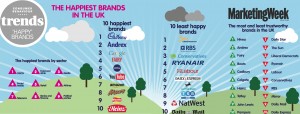 For B2B buyers, brand content and third-party content play critical roles in helping them make purchase decisions. Throughout the purchase cycle, B2B buyers at all levels within the organization consume, share, and discuss both brand content and third-party content and rely heavily on it for vendor selection and product and services selection.
For B2B buyers, brand content and third-party content play critical roles in helping them make purchase decisions. Throughout the purchase cycle, B2B buyers at all levels within the organization consume, share, and discuss both brand content and third-party content and rely heavily on it for vendor selection and product and services selection.
A new study from Chief Marketing Officer (CMO) Council and NetLine Corporation found that online content is highly influential for B2B buyers. The study surveyed executives from 30 different industries and found that three needs drive B2B buyers to actively seek out content to support specific decisions.
Nearly two out of three B2B buyers (62%) seek out content to learn about new market developments and industry practices, while nearly the same number of people (60%) seek out content to discover new solutions that could address specific needs. Just over one in two B2B buyers (52%) seek out content to address a project that is already in progress (or about to commence) for their companies.
The report also found that B2B buyers can be segmented into three categories of buyers in relation to their use of brand content during the purchase process: researchers, influencers, and decision makers. Depending on which category a person falls in, their content needs and consumption habits differ. For example, researchers look for broad content and focus on finding educational content that can help them better understand industry trends and advancements. Influencers are most interested in trusted third-party content and vendor-branded data sheets, technical specifications, and use cases. On the other hand, decision makers want research reports, analyst commentary, and data.
Notice that the three categories of buyers—researchers, influencers, and decision makers—each play different roles within the decision-making process. Researchers are busiest early in the process, but they’re still active toward the end of the process. The activity level of influencers and decision makers grows as decision making moves closer to the end of the decision funnel.
This activity level also correlates with the content use cycle of brand content from the beginning of the decision funnel to the end of the decision funnel and beyond. Following are the three primary steps of the B2B purchase decision making process, so you can see how the data from the study ties to each.
Step 1: Information Gathering for RFP Development
Early in the decision-making process, 40% of B2B buyers who responded to the CMO Council survey indicated that they use content to identify potential suppliers and partners. For example, 51% use third-party content to get objective information about best practices and best-in-class solutions. In this early stage, research reports are highly influential and very useful in raising awareness of brands, products, and services.
Brands should keep in mind that the decision making process begins with 68% of B2B buyers searching for content using search engines and portals while 40% go directly to brand and vendor websites. Not to be overlooked, 25% of B2B buyers find content after clicking on an email link sent by a trusted third-party or a friend or colleague.
Lesson for Brands: Early in the decision-making process, brands must be represented in third-party, thought leadership content.
Step 2: RFP Review and Vendor Selection
During the second phase of the decision-making process, B2B buyers look for objective content to support their findings from step one. They use this data as they review RFP responses from vendors. This content comes from third-parties as well as directly from brands, so brands must have their data-driven content readily available.
For 44% of respondents to the CMO Council survey, technical details and specs about products ranked as the second most valuable type of content to make buying decisions. This data-driven content can come from third party reviews, etc., but brands must have it at consumers’ fingertips as well. B2B buyers rely heavily on industry studies, technical specifications, analyst reviews, expert commentary, and third-party content during step two.
Lesson for Brands: During the second phase of the decision-making process, brands must ensure B2B buyers have easy access to data that supports its claims within its RFP response. Furthermore, brands must be represented in third-party content such as expert commentary, analyst reviews, and industry studies.
Step 3: Post-Purchase Supplementation
After the vendor has been selected, the use of third-party and brand content doesn’t end. In fact, the study found that 82% of B2B buyers continue to use content after the purchase has been made to identify potential add-on purchases. They use content for education, to stay current on industry trends that might affect their future purchase needs, and to identify new solutions that could benefit their companies. Just because the single transaction is over doesn’t mean there aren’t ongoing opportunities for brands to connect with these B2B buyers in the future.
Lesson for Brands: After the purchase decision has been made, brands must continue to be represented in third-party content of all kinds, and brands must continue to publish useful, high quality content of their own.
Bottom-line, content isn’t transactional. It adds lifetime value, and brands need to start viewing it as such.
Image: Steven Goodwin

 Marketers are quick to ask each other if they have a mobile-first strategy in place. Although we’re getting closer to widespread adoption of mobile-first strategies, most companies are still trying to catch up with a mobile-always strategy (comScore reported that we had a
Marketers are quick to ask each other if they have a mobile-first strategy in place. Although we’re getting closer to widespread adoption of mobile-first strategies, most companies are still trying to catch up with a mobile-always strategy (comScore reported that we had a  A brand logo can become a valuable corporate asset — just ask Playboy, Nike, or Apple. These brand logos have become so iconic that they don’t even need to include the brand name. Remember when
A brand logo can become a valuable corporate asset — just ask Playboy, Nike, or Apple. These brand logos have become so iconic that they don’t even need to include the brand name. Remember when 

